Cooking is one of my favourite hobbies followed closely by eating. Attending a cooking class is the best way to indulge in both cooking and eating ! Even before I left India, I had made up my mind to attend a cooking class in Bali. I was extremely busy planning my trip that it never occurred to me to research cooking class options in Bali.
After reaching Bali, I dropped into the office of a travel agent and asked for details regarding cooking class in Bali. He suggested me Paon Bali in Ubud. They charge 1750 Rs for a half day class. The price included transportation, a tour of local market, a sumptuous meal and a print out of all recipes to take home. That’s how I zeroed in on Paon cooking class. Travel agent booked a place for me over the phone.
Puttu, the driver, picked me at 8.30 Am from Ubud residence and he dropped me at Ubud market. There I joined a group of people who were taking the class with me. Market reminded me of Chala market in Trivandrum – crowded and filthy.




Puttu took us around the vegetable market, fruit market and spice market, explaining in detail each item used in Balineese cuisines. I came across some uncommon vegetables – galngal, kaffir lime, white ginger etc in the vegetable market. At the fruit market, he made us taste a variety of local fruits like snakeskin fruit, mangostein, rambutan and litchi.

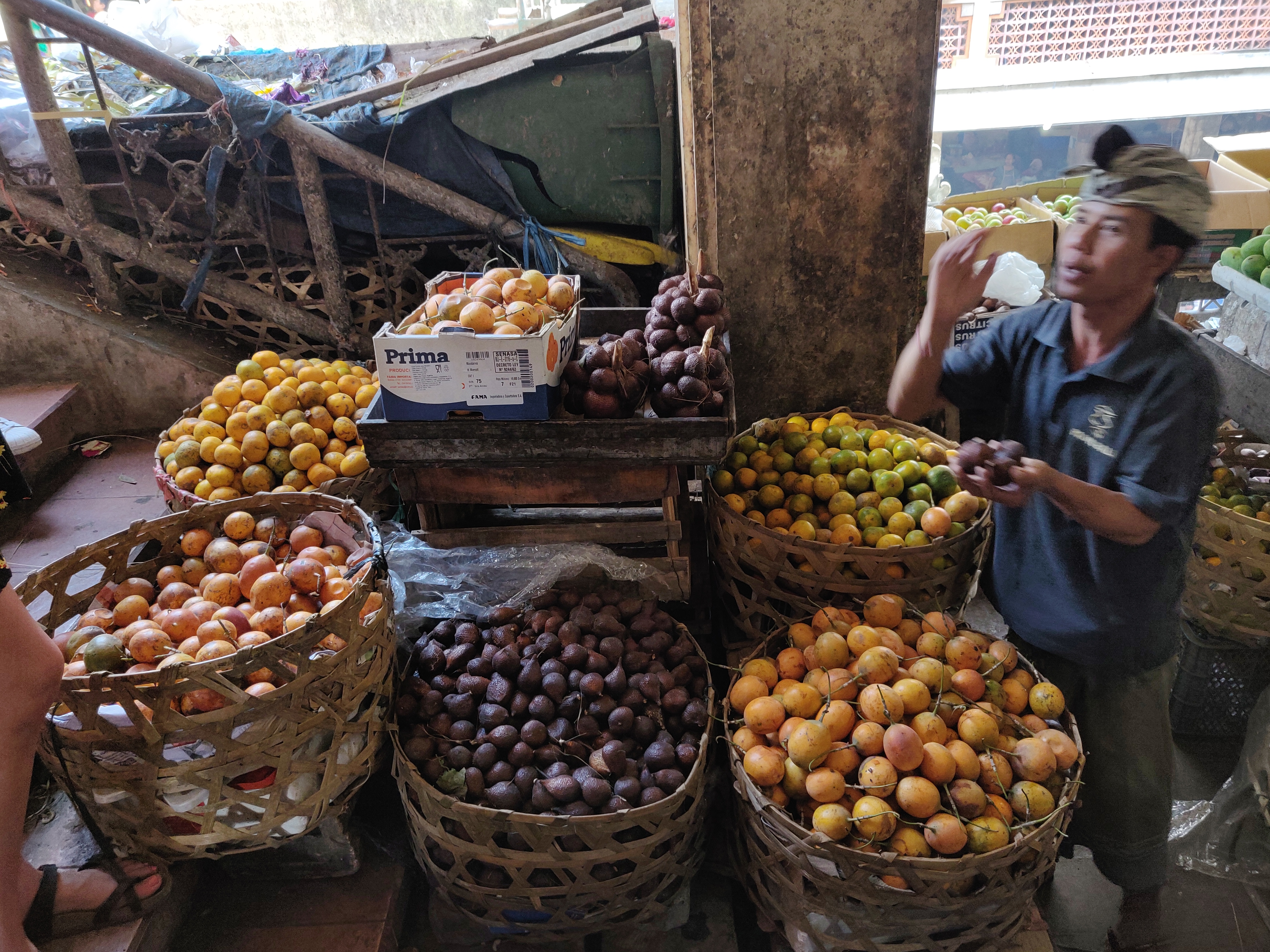
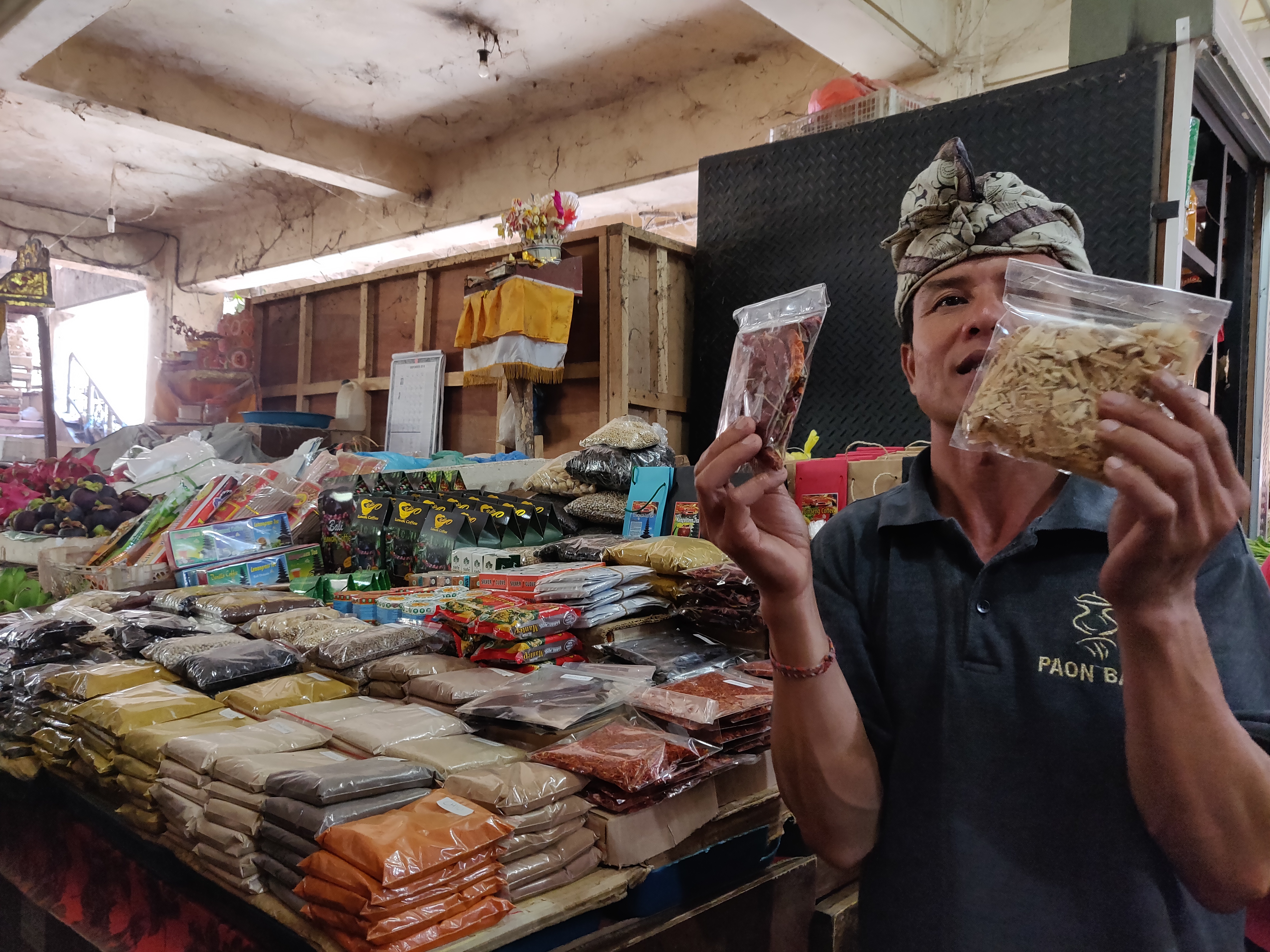
From there we were taken in taxi to a paddy field close to their home. Puttu explained in detail about the importance of rice in life of Balinese people. Rice is the staple diet and consumed three times a day. Cooked rice is called Nazi (Nazi goreng for veg fried rice, Nazi ayam for chicken fried rice etc). Three varieties of rice are cultivated in Bali – white, black and red. White sticky rice called Ketan is used for cooking. Black rice or Injin is used to make puddings and desserts. Red rice or Barak is very expensive and used for temple offerings. Actually Padi rice which takes 210 days to mature is the traditional rice of Bali. But it is now replaced by newer varieties.

After that we were taken to their home where cooking class was to be conducted. Pushpa, the Cooking Diva of Bali , welcomed us with a big smile and immediately made us comfortable with her friendly greetings and talk. Initially, we spend time interacting with Puspha’s family.

I was able to understand more about Balinese culture from Pushpa. Generations live together in the same compound. Some families have upto 40- 50 members living in the same compound. The living room is an open room constructed separately where the family members relax. They have religious statues in their compounds where they pray and make offerings to God. All the buildings are ornately carved and decorated.
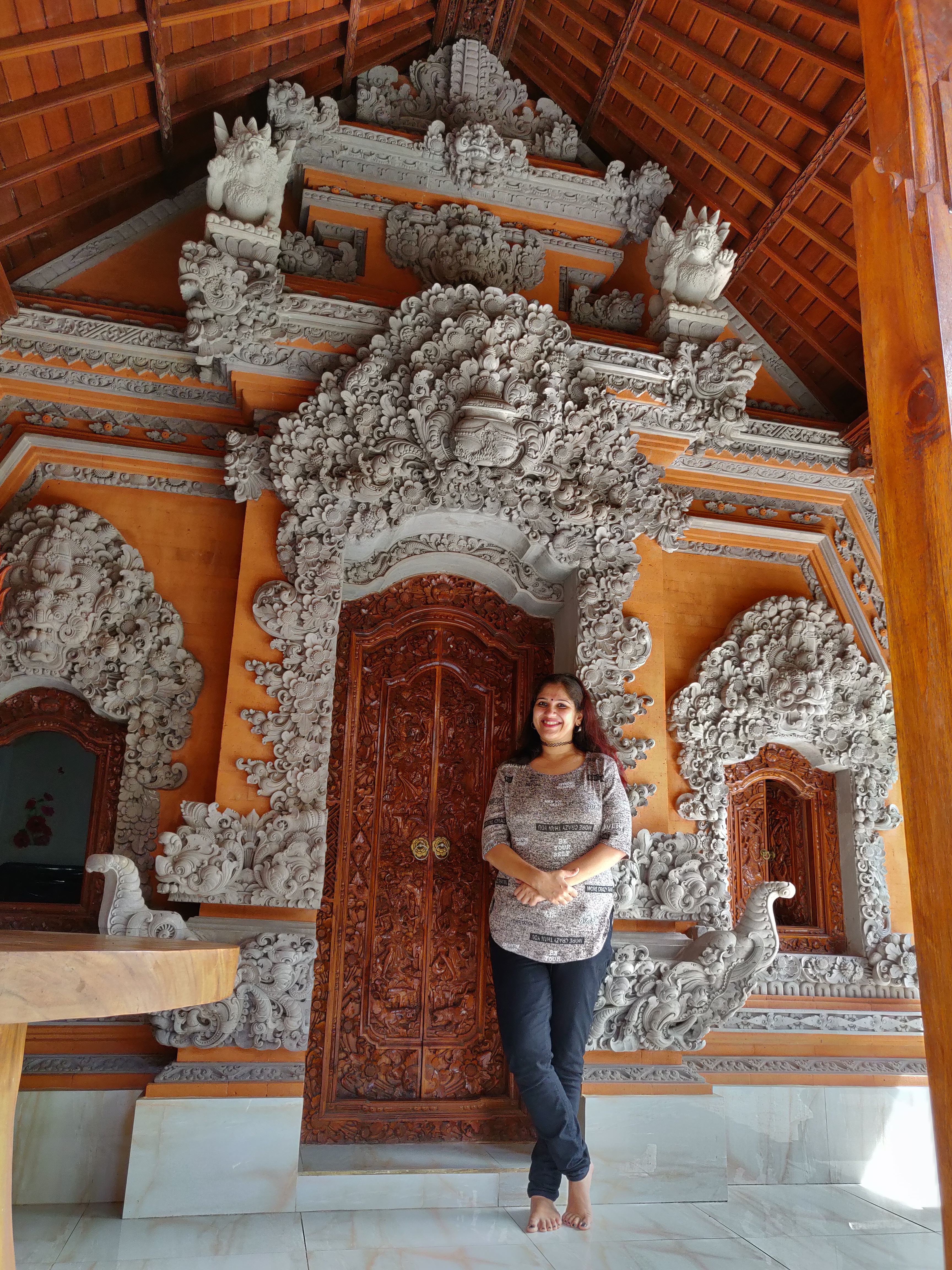


Pushpa had a great humour sense, making the cooking class a pleasant experience. Class was set in the backyard in an airy and shaded garden area of the compound. All the raw materials required for our cooking were arranged beautifully on the table.
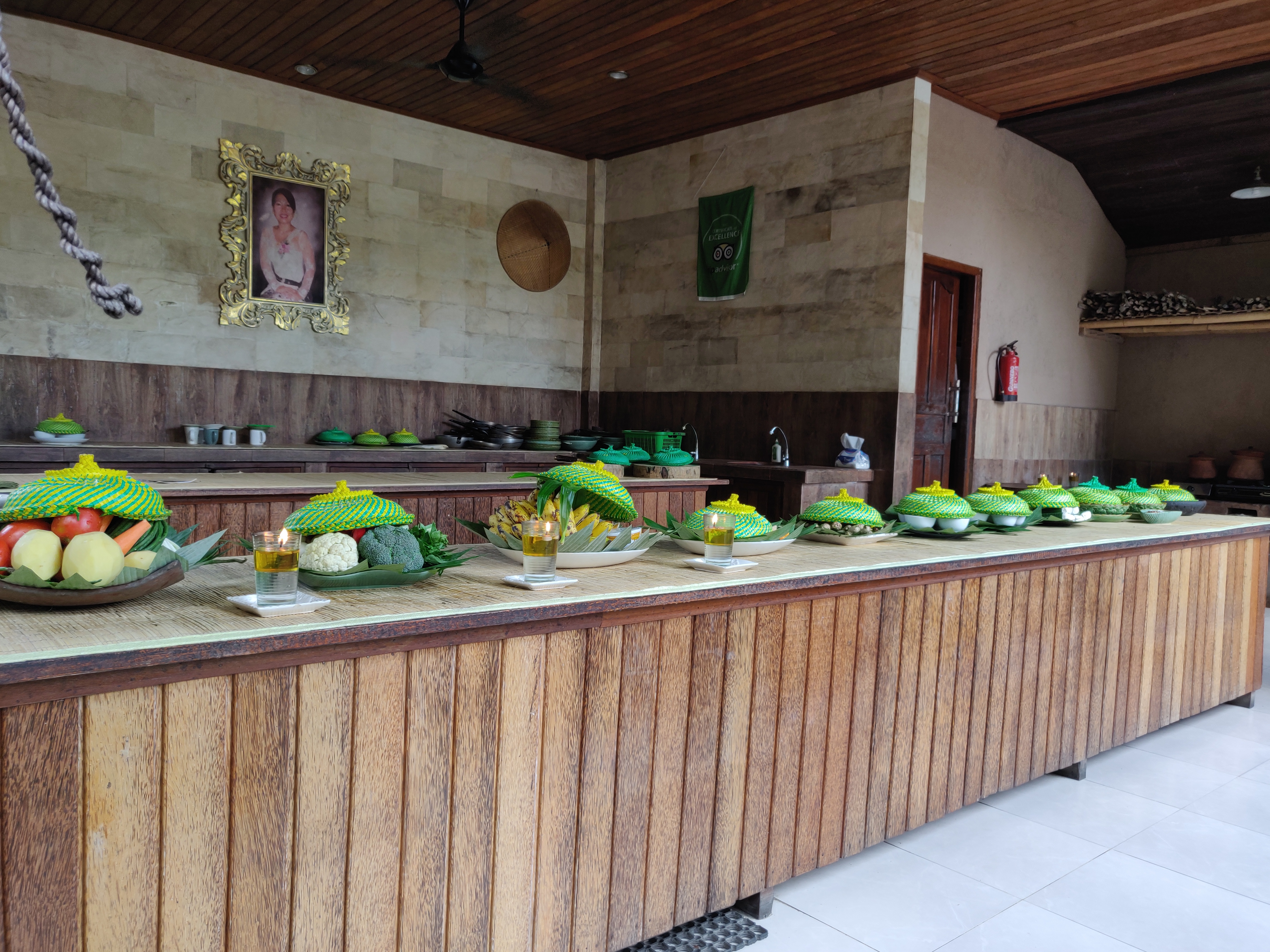
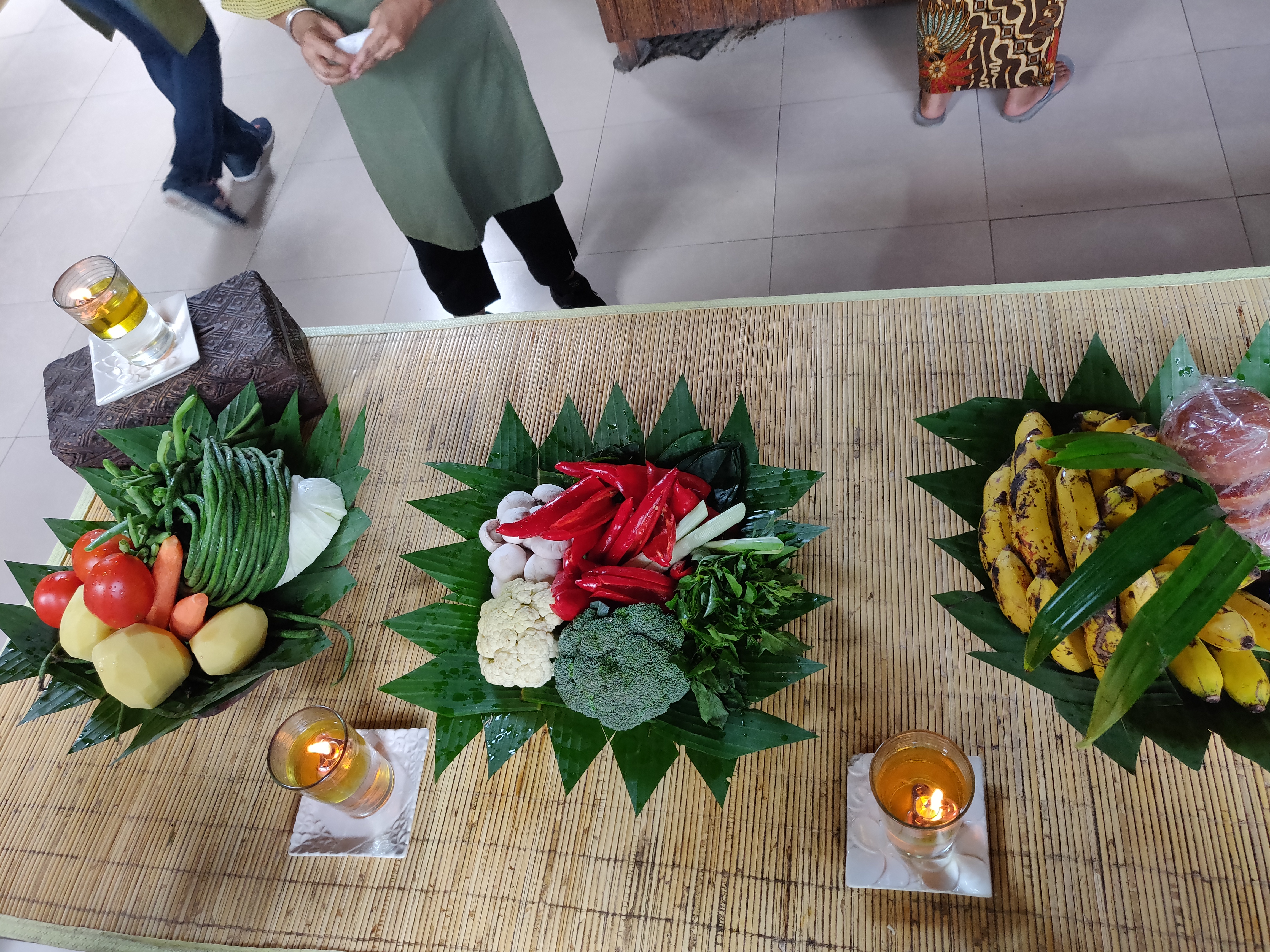


Pushpa then gave us a briefing of what our day was going to be. We were to make nine dishes from the scratch and it included the two basic sauces used for Balinese cooking – Base gede and Gado gado. We had to prepare everything on our own from chopping to frying, grinding to mixing.



We were introduced to the traditional way of doing things – pounding with mortar and pestle, grinding with traditional stone etc. An interesting gadget that I came across was a metal piece used to gouge out coconut. The coconut pieces are then scraped in a scraper to be used in dishes.



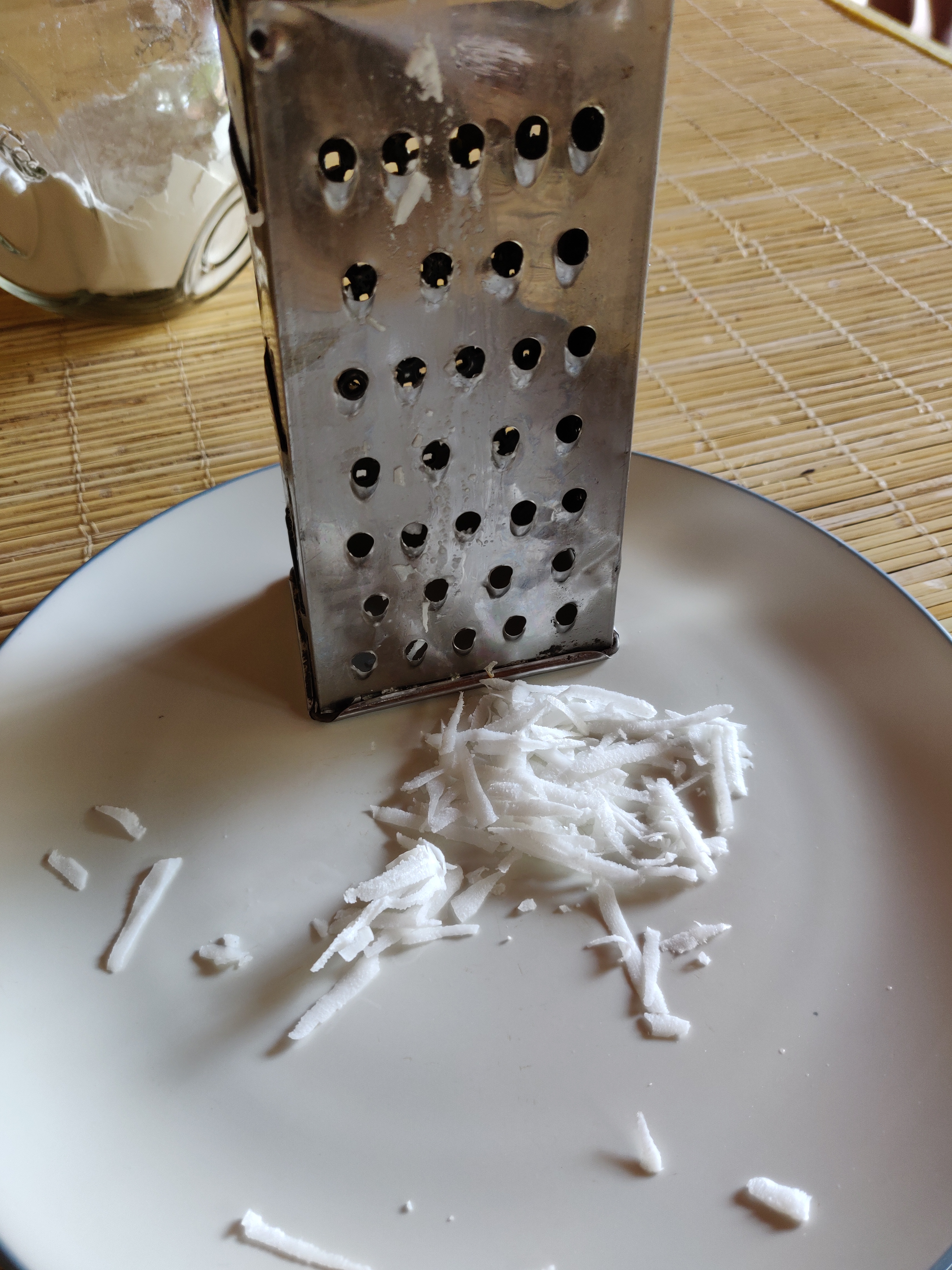

We all took turns chopping, pounding, grinding all the required items to prepare various dishes. It was a time when all of us interacted with each other. Pushpa’s daughters and assistants were always on hand to offer us assistance. After that we proceeded to cook the dishes. Two of us shared one gas stove. We were given a small portion to prepare and later, all our portions were mixed together to make one buffet meal. Items we prepared were
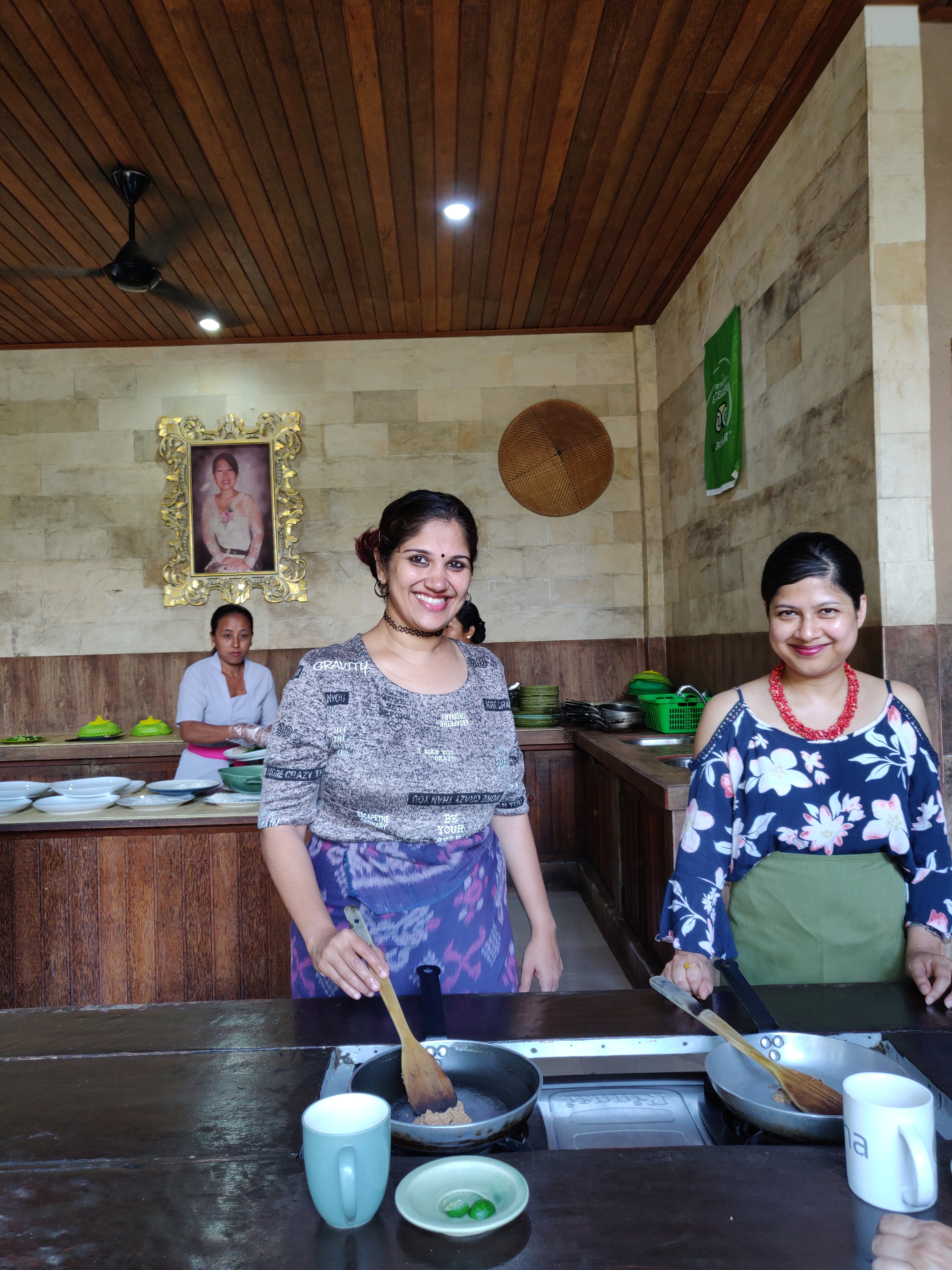
- Kuah Wong or Sup Jamur or Clear mushroom and vegetable soup

- Be Siap Mesenten Kare ayam or Chicken in coconut curry
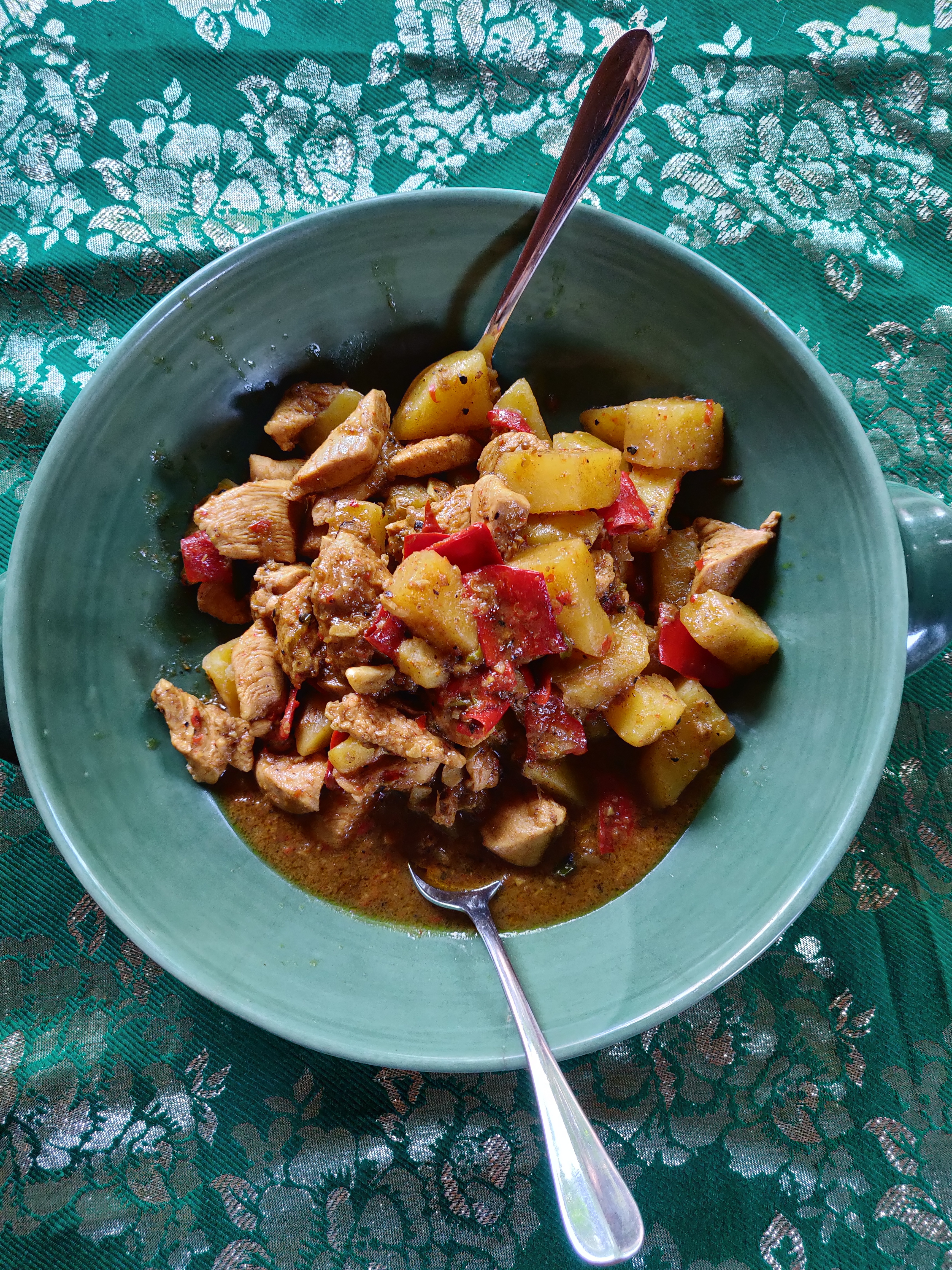
- Jukut Urab or coconut and snakebean salad

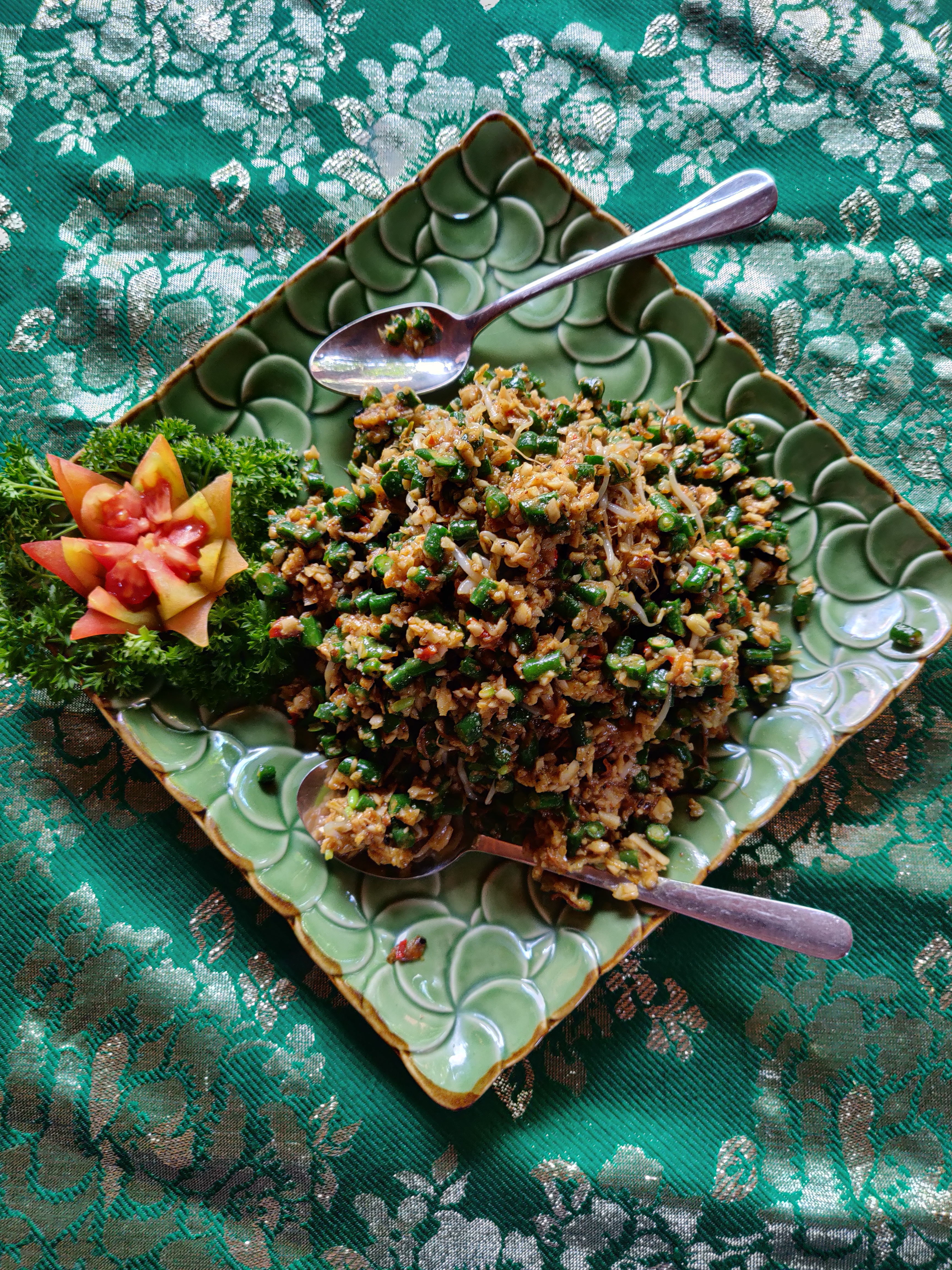
- Kacang Me santok or vegetables in peanut sauce
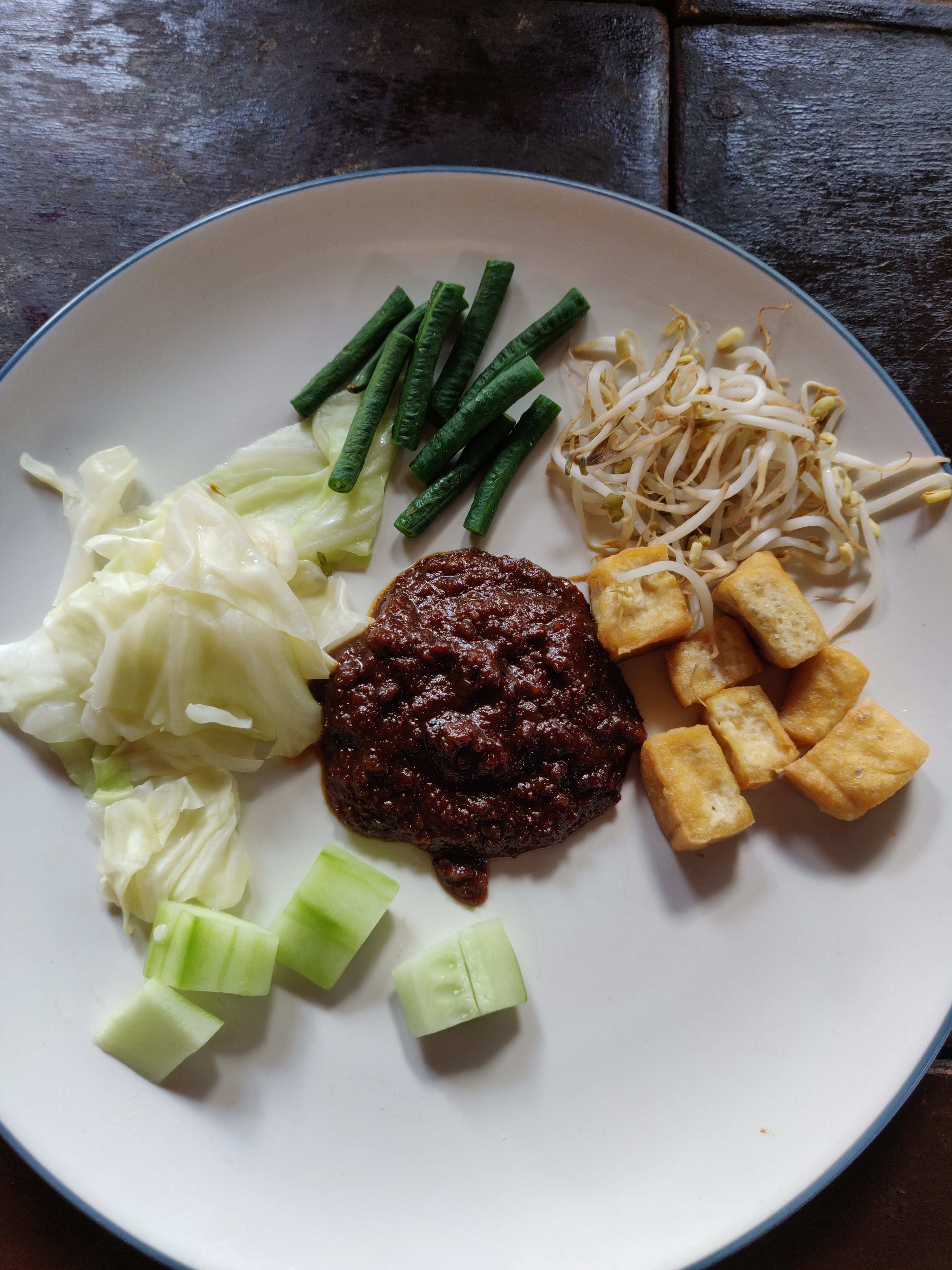

- Chicken satay or Sate Lilit ayam or Sate siap

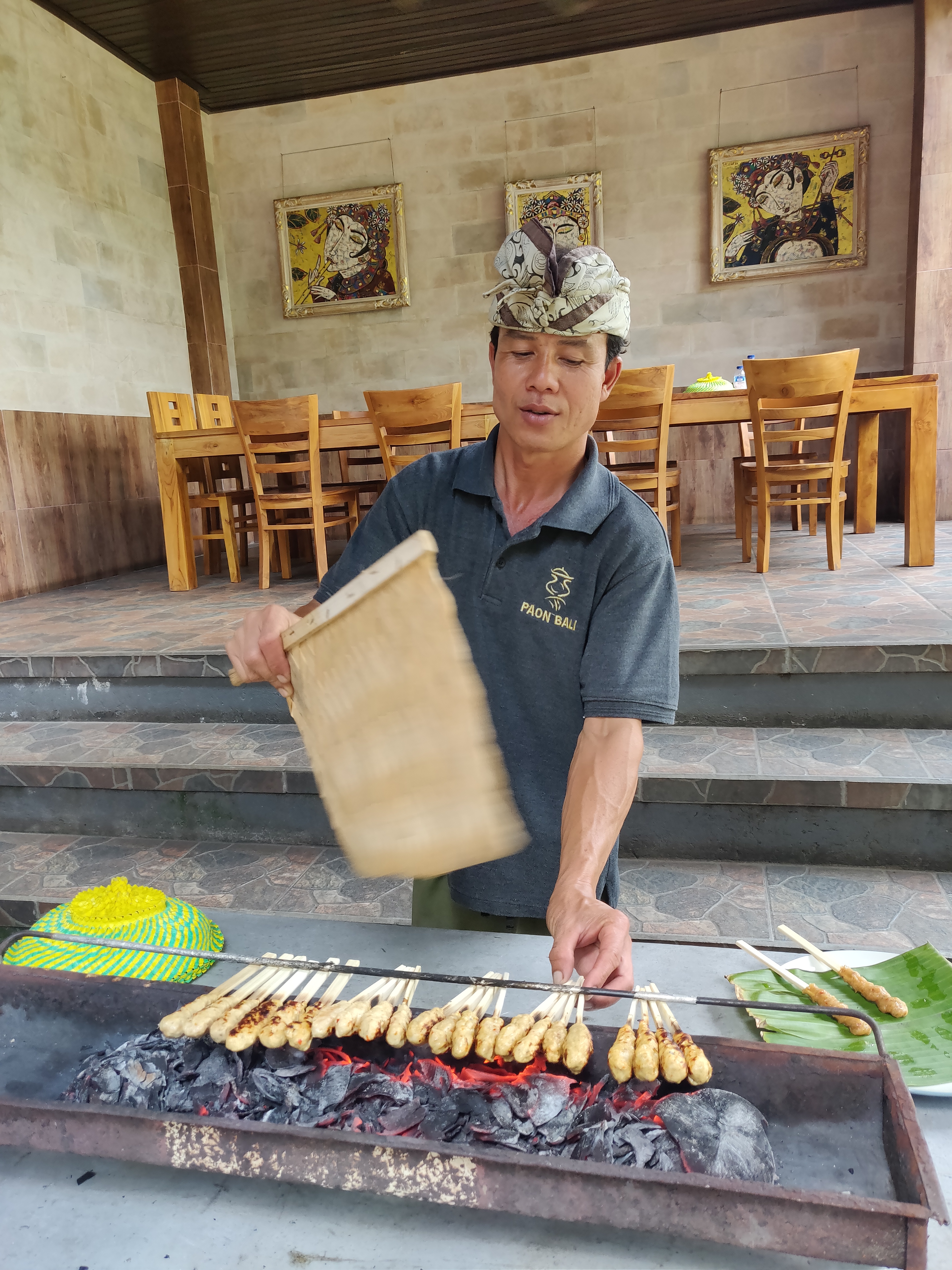

- Pepesan Be Pasin or Pepes Ikan or Steamed fish in banana leaves

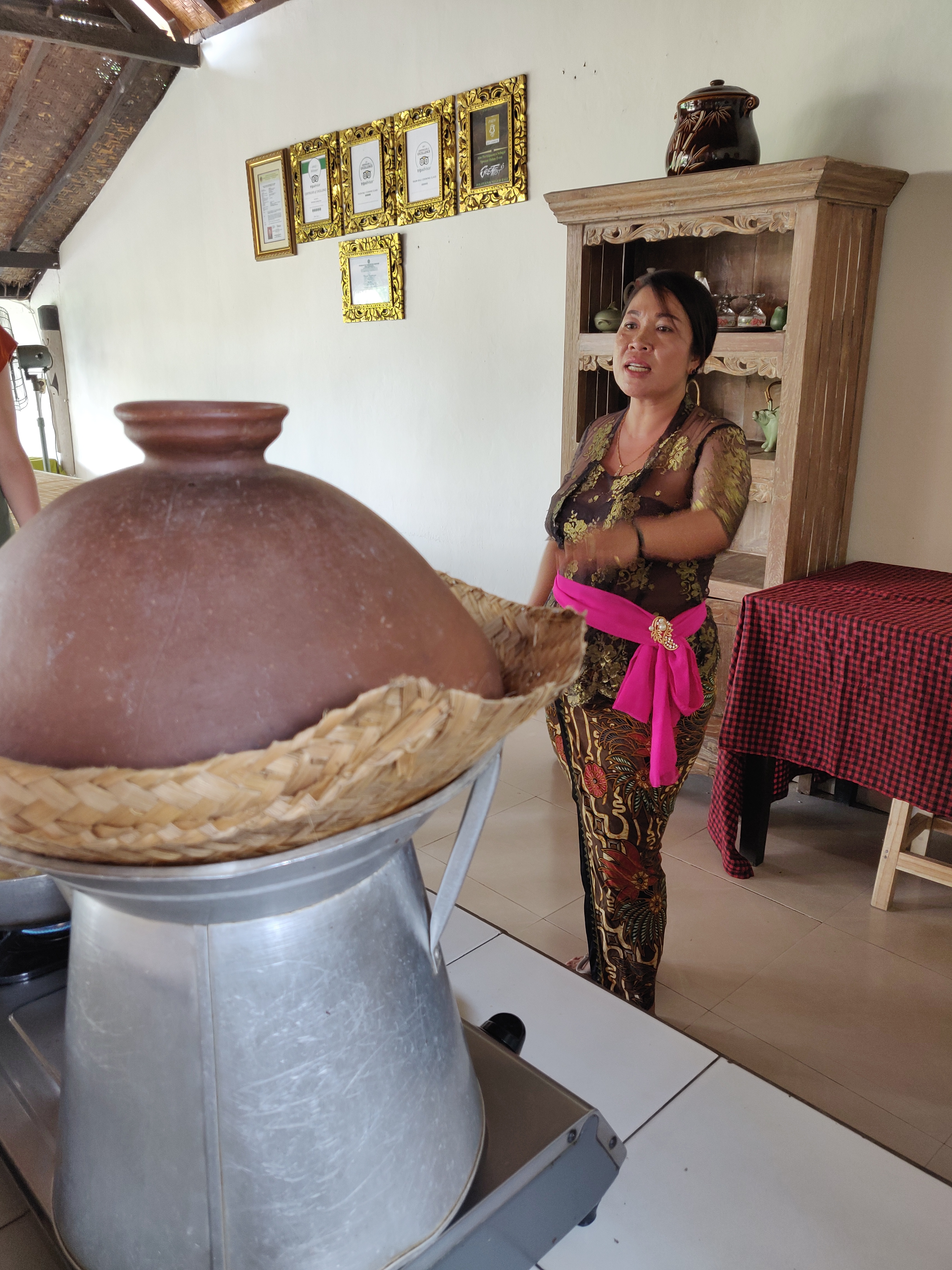
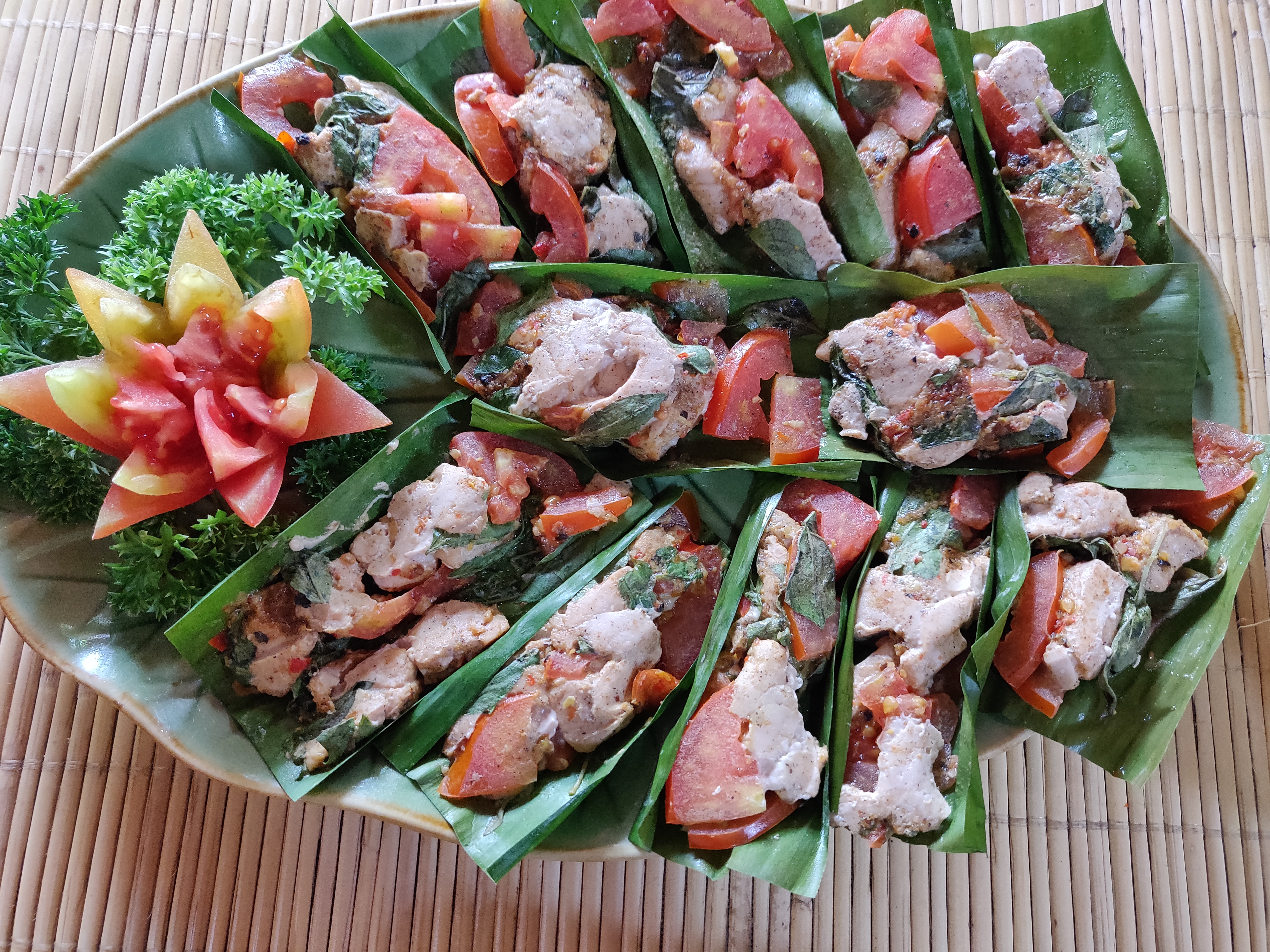
- Tempe me Goreng or Tempe Kering or deep fried tempe in sweet soy sauce
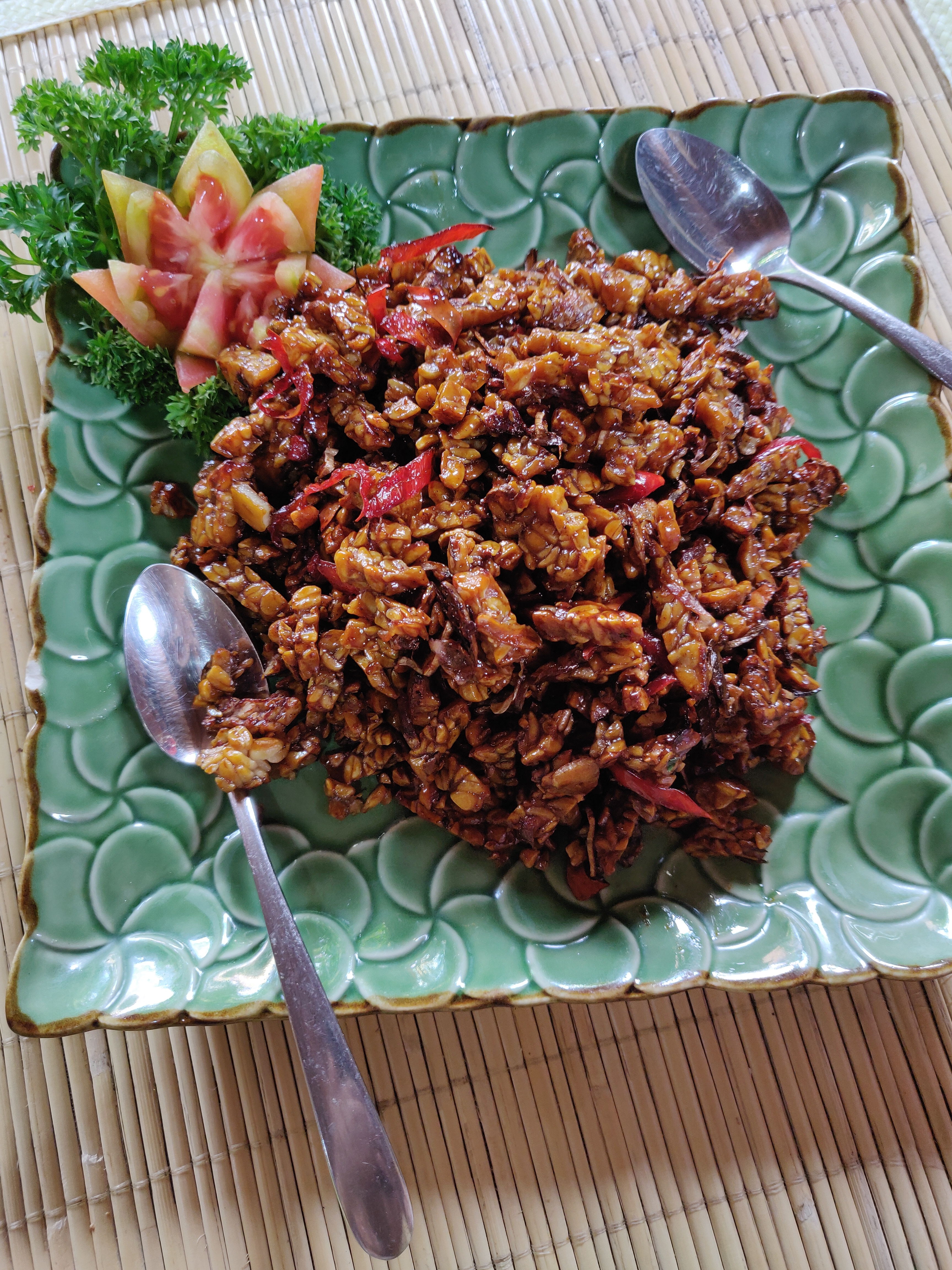
- Kolak Biu or Kolak Pisang or boiled banana in palm sugar syrup
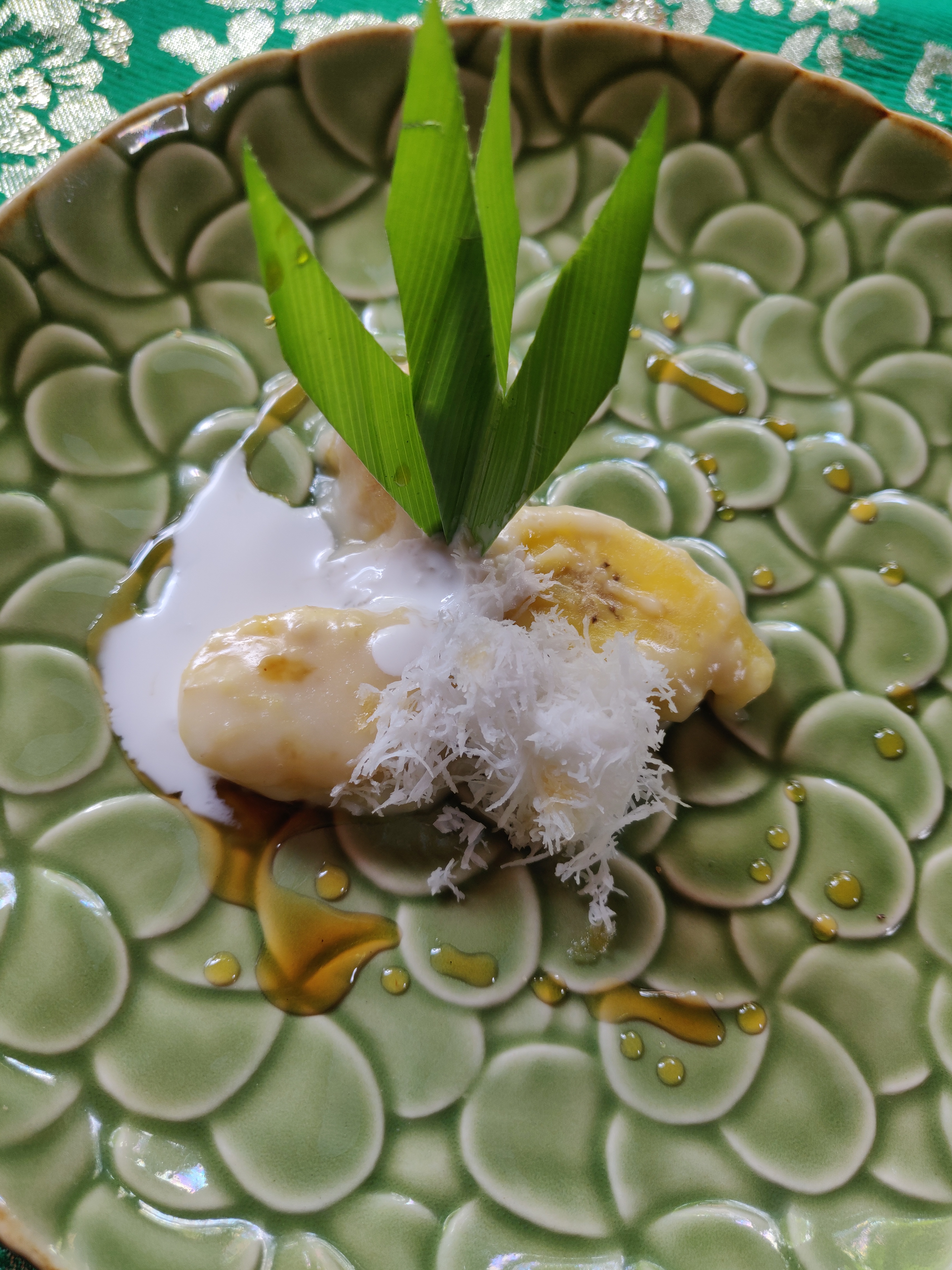
Final result was an amazing array of dishes. I was surprised that we were able to prepare all nine dishes in just two hours. Then we all sat at two tables and had the food together. The food tasted absolutely delicious. It was in fact the best food I had in Bali. After the class, Puttu dropped me back at Ubud around 2.30Pm.
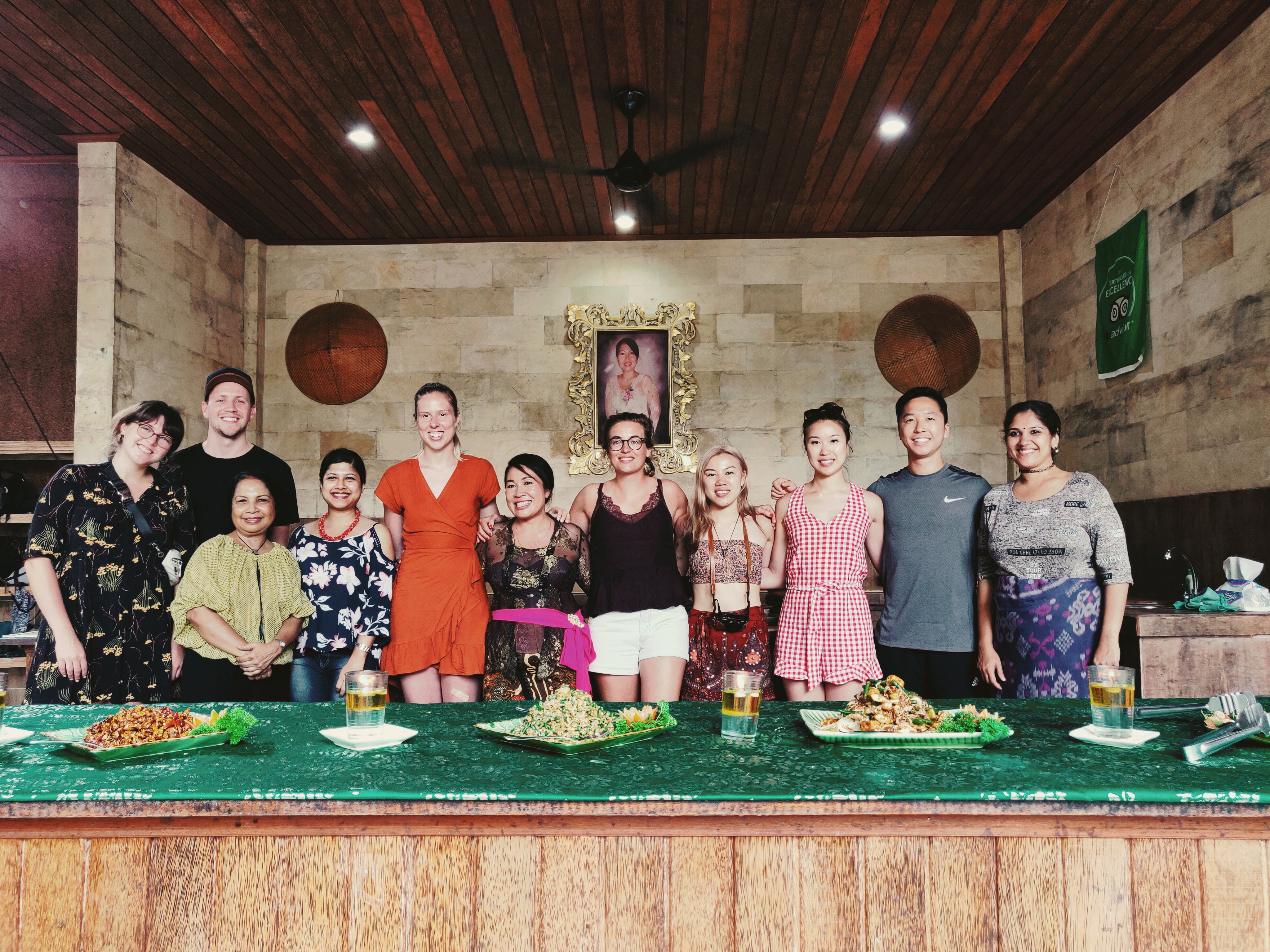
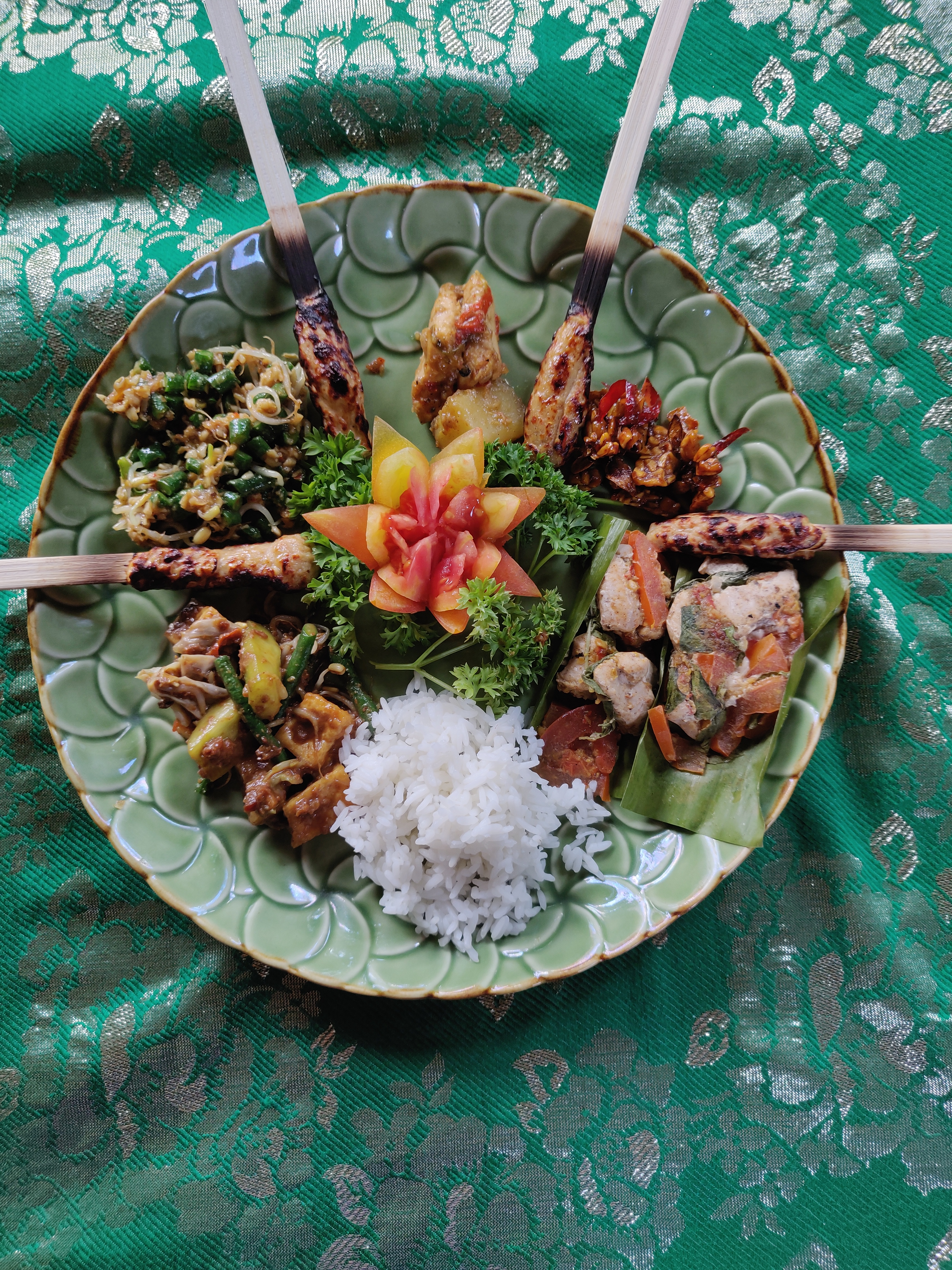

Cooking class was a memorable experience for me. In Bali, the cooking class is not just about preparing dishes, it’s an opportunity to interact with Balinese people, learn their way of cooking, meet fellow travellers and above all taste some of the best local food.

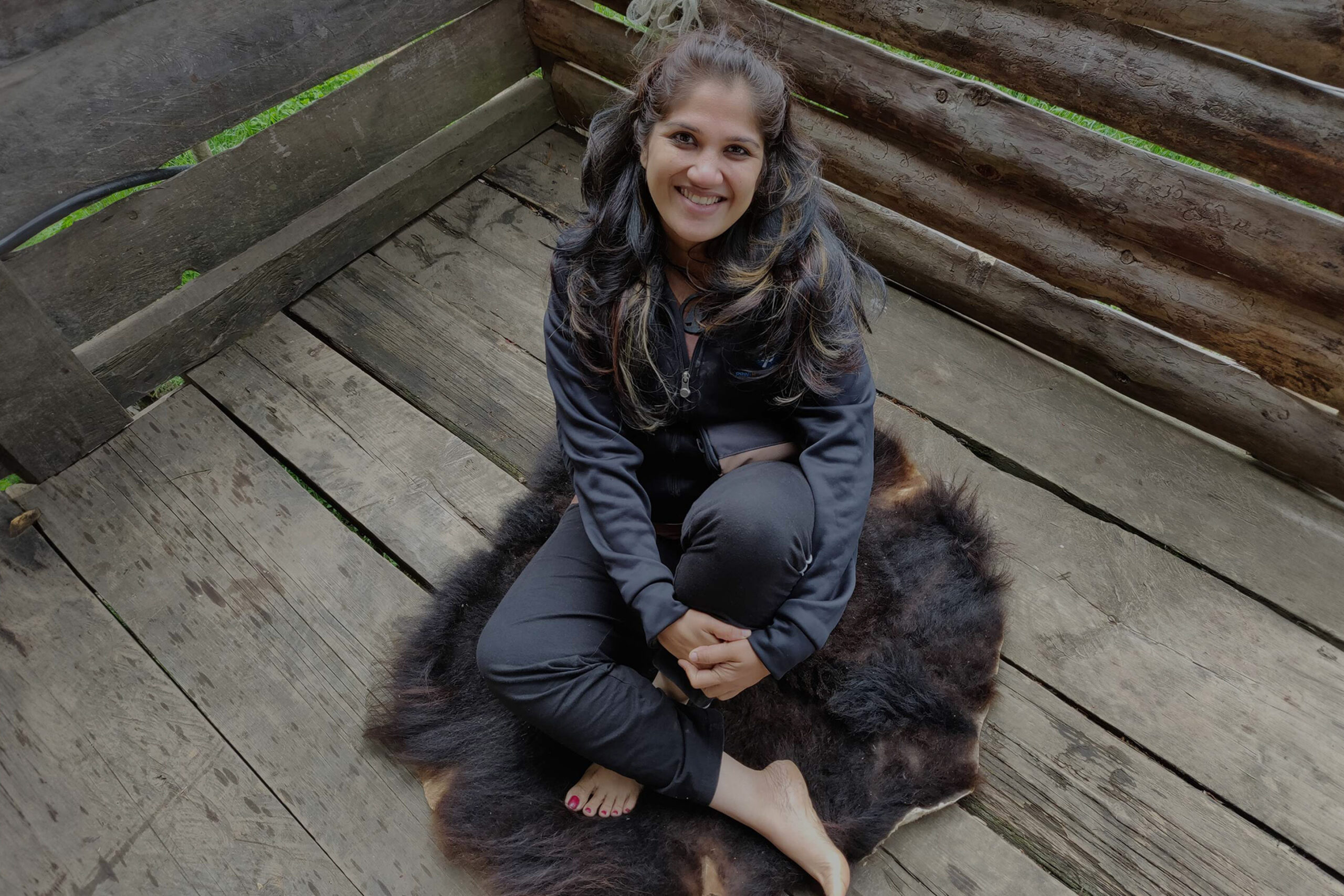
So unfortunate that you are a vegetarian…..Or else……Mmm